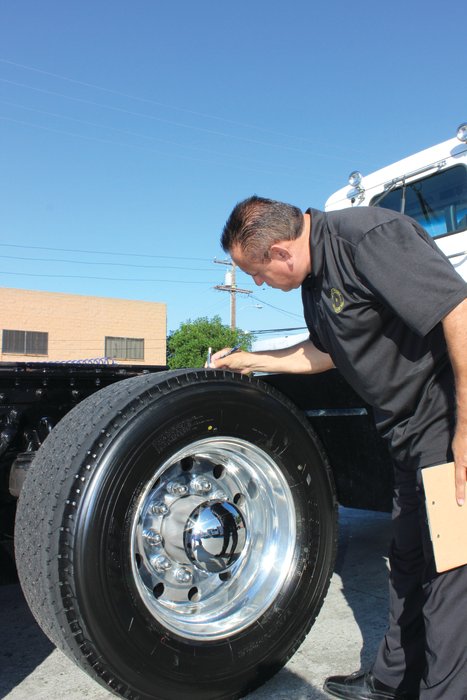“Service personnel either employed internally or by a service provider, must be properly trained to perform repairs that comply with the industry,” said Gary Schroeder, Cooper Tire’s director of commercial vehicle and OEM sales for Roadmaster. Schroeder continued to explain that wear conditions are extremely important in determining tire cost savings and pointed to the Technology and Maintenance Council (TMC) Radial Tire Conditions Analysis Guide, which details examples of steer, drive and trailer tire wear as the go-to tire wear source.
“Typical causes could be alignment, lack of adequate inflation, improperly matched tires, suspension issues, or improper bearing adjustment,” Schroeder said. “Those conditions pointing to an operational or service related issue need to be researched and corrected. Conditions pointing to a vehicle problem should be corrected before new tires are installed, otherwise the problem will repeat itself.”
The next chapter: Developing your data plot
Creating a process to analyze out-of-service tires is just the first step in plotting your tire scrap analysis story. It’s equally important to outline and catalogue your tire findings so that you can decipher what the collected data is saying. The key is to understand your operation, and know what to anticipate—for instance, curbing in an urban application or scrubbing in an operation with limited access. If it can’t happen during operation, it’s more than likely service or manufacturing related. There are, however, certainly exceptions.
“Some tires will naturally come out of service due to age and natural causes. A disproportionate number of tires coming out of service for similar reasons tell a story,” Michelin’s Crehan said. “Therefore, written records are an essential part of the process to capture the data.”
The first step to starting a program is to have a form to record all of the necessary information to successfully track scrap tires. A good place to start is checking with your tire dealer to see if there’s a form specific to your tires. Roadmaster dealers, for example, have forms that come with out-of-service codes to break the conditions down to operation/service related issues, casing-related issues, program specification issues, repair-related issues, and retread-related issues. Out-of-service codes are provided for each category and there are places to track both new tire brand codes, casing brand codes and retread brand codes.

Additionally, Crehan recommended that fleets should work with properly trained service personnel who have tire conditions analysis experience, such as a service provider who is trained and certified by the Tire Industry Association (TIA) in commercial tire service. These service personnel can also assist in methods to organize and track the data, an example of which is a form to record all of the necessary information to successfully track scrap tires.
Like most fleet management processes, how you organize your scrap tire analysis is going to depend on your fleet’s application. A general rule of thumb is that more data is better. More tires provide more opportunity to find and identify patterns in tread wear and tire failure, explained Matt Loos, director of TBR marketing in the Bridgestone Commercial Division.
“Our recommendation to fleet managers is to establish a benchmark for the tire management program that identifies the average number of miles that can be expected on each wheel position,” Loos explained. “This allows identification of areas of opportunity for improvement and the creation of a set of best practices.”
Bridgestone offers the Fleet Analyzer 2.0, a mobile and web-based inspection tool to assist with fleet management. This software includes in-service and yard check modules to assess general tire health, forecast tire replacement and correct immediate problems before they become costly downtime. In addition, an out-of-service tire component enables the collection and analysis of scrap tire data, building a valuable library of information to assist with decision making.













